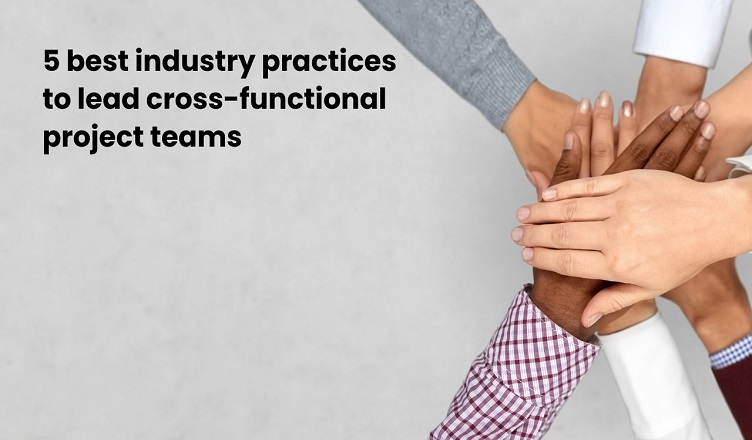As a project manager, when you are managing complex development projects, there are many things you need to take care of. From resolving conflicts to developing project schedules, the list seems endless. However, by adopting the right approach and embracing Agility, you can lead cross-functional teams toward success.
Below we have broken down the 5 best industry practices you can follow to improve your team’s productivity.
Table of Contents
1. Use team collaboration platforms like Miro, Notion, and Jiro
A clear vision serves as the guiding light for the entire project team. With collaborative platforms like Miro and Notion, you can create task boards, assign responsibilities, and track progress to enhance efficiency.
Teams can also create Kanban boards or custom workflows to manage project tasks, set deadlines, and monitor the status of each task. This ensures transparency and accountability among team members. By leveraging technology tools, you can help the team understand the project’s objectives, scope, and deliverables from the beginning, fostering teamwork and reducing communication gaps.
2. Practice delegation to create self-autonomous teams
Effective project managers empower their team members by delegating tasks and granting autonomy. They recognize the expertise and capabilities of each team member and assign responsibilities accordingly.
Project managers should also offer clear guidelines and expectations and allow the teams to explore their own approaches and solutions. For complex projects, most managers conduct brainstorming and feedback sessions to encourage team members to voice their opinions and eliminate roadblocks.
3. Prioritize conflict resolution
Each team has members with diverse personalities and opinions. And at some point or another, conflict is bound to occur. Although not all disagreements are destructive, they may create roadblocks and reduce the team’s productivity. That’s why the project manager must identify the cause of conflict and resolve it immediately. Here are some strategies you can use to maintain a productive environment:
- Use facts to understand the situation: Conflict resolution should be based on facts, not emotions. Understand the POVs of both parties and find a logical solution using data points. Using facts will also help them understand their faults and nobody will feel the decision was unfair.
- Encourage compromise: Guide the conflicting parties toward finding a middle ground that satisfies their interests. Emphasize the importance of collaboration and the value of finding win-win solutions.
- Escalation and mediation support: In more complex or severe conflicts, consider involving higher-level management or seeking external mediation support. An impartial third party can provide a fresh perspective and help facilitate resolution when internal efforts are unsuccessful.
4. Promote growth and development
Investing in the growth and development of your team members enhances their skills and knowledge and invokes greater dedication toward achieving goals. By nurturing a growth culture, you create an environment where individuals feel valued and motivated to excel. Here are a few things you can do to empower your team:
- Create individualized development plans: Work with each team member to create individual development plans based on their strengths, weaknesses, and career aspirations. Tailor development opportunities to their specific needs, such as training, workshops, or mentoring.
- Provide constructive feedback: Offer regular and constructive feedback to help team members understand their strengths and areas for improvement. Recognize their achievements and guide how they can further develop their skills.
- Support skill-building opportunities: Identify and provide resources or opportunities for team members to enhance their skills. This could include workshops, conferences, online courses, or certifications that align with their professional growth.
- Encourage knowledge sharing: Foster an environment where team members share their knowledge and expertise. Facilitate knowledge-sharing sessions, peer mentoring, or lunch-and-learn sessions where team members can exchange ideas and learn from each other.
5. Kickoff meetings with a clear agenda
Most meetings are a waste of time as they don’t add any value. Moreover, frequent meetings can be a hassle as they may delay the project schedule. To conduct productive team meetings, here are a few things the manager can do:
- Create a list of actionable items: Identity what you want to achieve with the meeting and create actionable items to save time and enable faster decision-making. Additionally, assign responsibilities and deadlines for each action item. It ensures that outcomes are captured.
- Set time allocations: Allocate specific time slots for each agenda item. Consider the complexity and importance of each topic when determining the time needed for discussion. It ensures that all agenda items receive adequate attention.
- Keep things focused: Ensure you talk only about designated topics and avoid going off tangent. If new complications arise, note them and address them separately.
Build empowered project teams
Leading project teams requires a multifaceted approach that combines effective communication and collaboration. As project managers, you should establish a clear vision, foster a collaborative culture, and empower individuals to unlock their full potential.
Remember, great leaders inspire greatness in others. By adopting these strategies, you can encourage your team to reach new heights and achieve remarkable results, propelling your projects and organization toward success in today’s competitive landscape.
Hemant is Digital Marketer and he has 6 + years of experience in SEO, Content marketing, Infographic etc.
